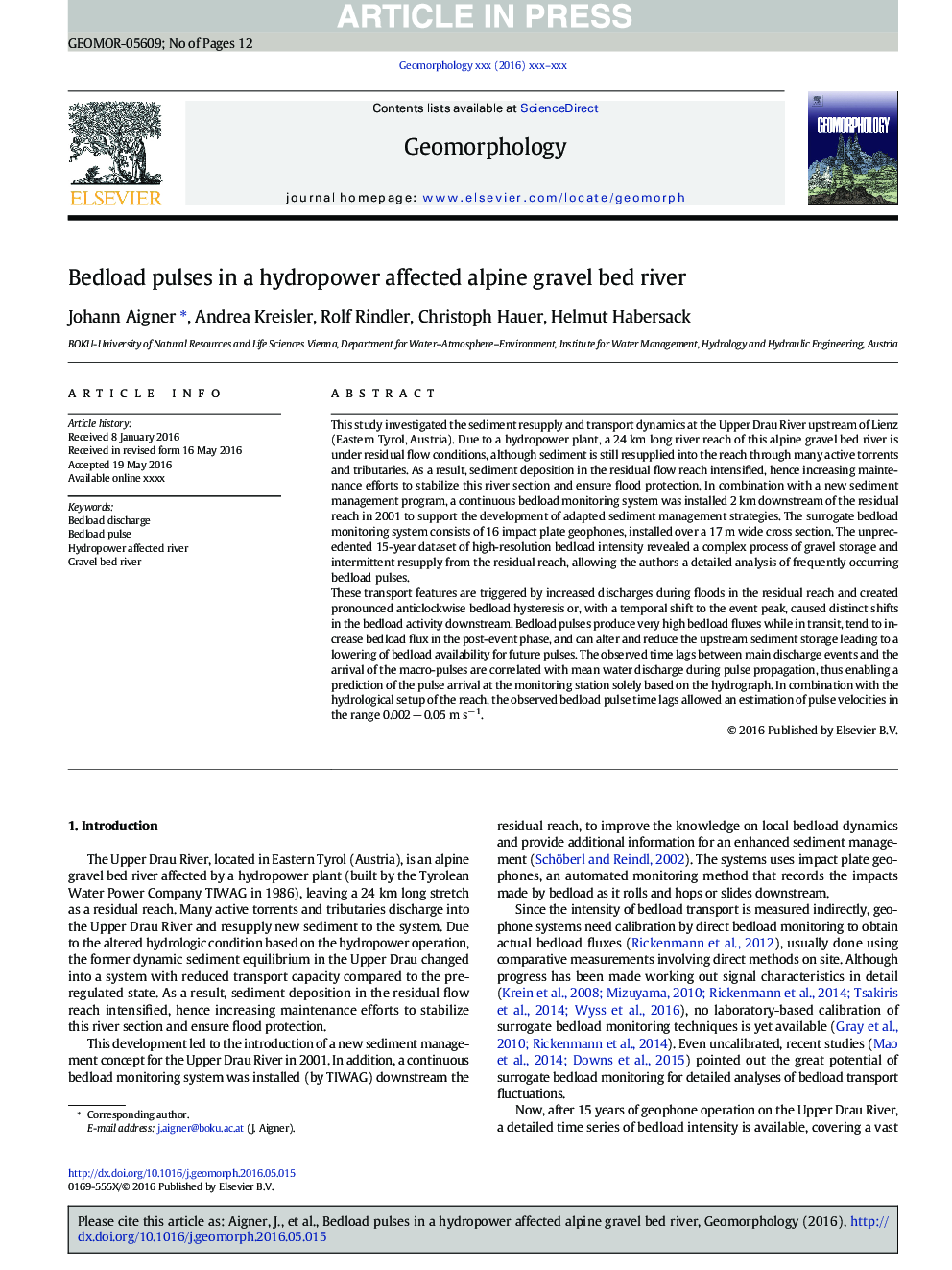| Article ID | Journal | Published Year | Pages | File Type |
|---|---|---|---|---|
| 5780910 | Geomorphology | 2017 | 12 Pages |
Abstract
These transport features are triggered by increased discharges during floods in the residual reach and created pronounced anticlockwise bedload hysteresis or, with a temporal shift to the event peak, caused distinct shifts in the bedload activity downstream. Bedload pulses produce very high bedload fluxes while in transit, tend to increase bedload flux in the post-event phase, and can alter and reduce the upstream sediment storage leading to a lowering of bedload availability for future pulses. The observed time lags between main discharge events and the arrival of the macro-pulses are correlated with mean water discharge during pulse propagation, thus enabling a prediction of the pulse arrival at the monitoring station solely based on the hydrograph. In combination with the hydrological setup of the reach, the observed bedload pulse time lags allowed an estimation of pulse velocities in the range 0.002 â 0.05 m sâ 1.
Keywords
Related Topics
Physical Sciences and Engineering
Earth and Planetary Sciences
Earth-Surface Processes
Authors
Johann Aigner, Andrea Kreisler, Rolf Rindler, Christoph Hauer, Helmut Habersack,
